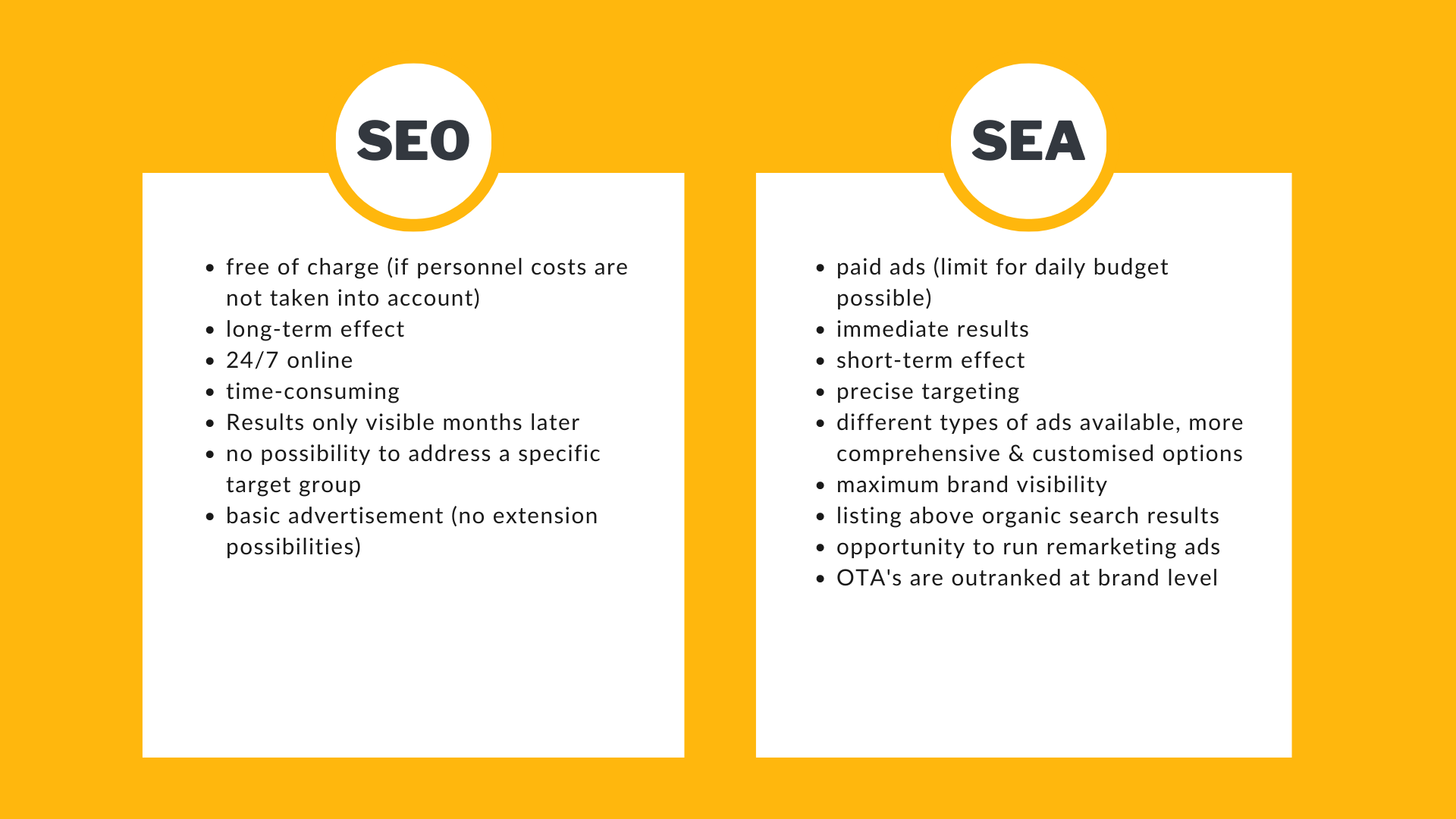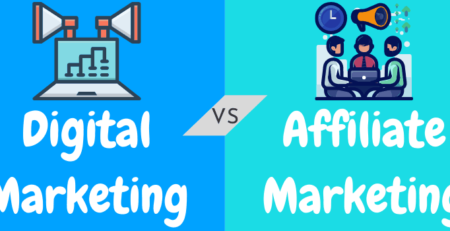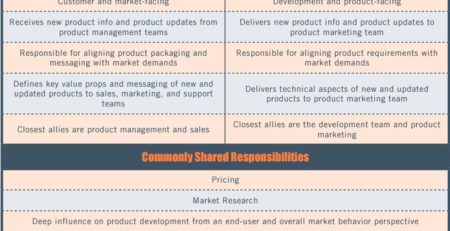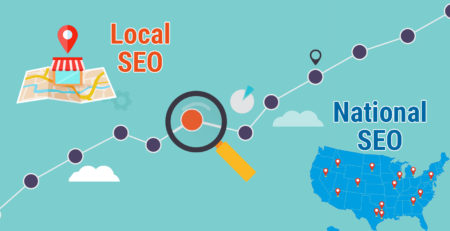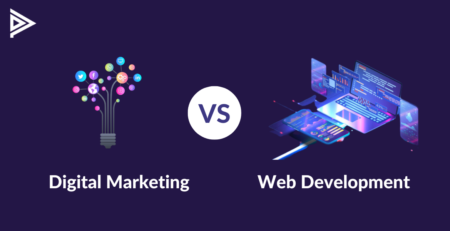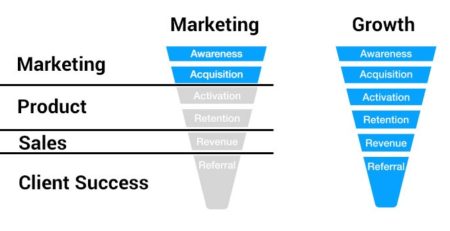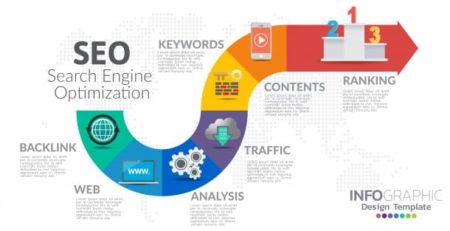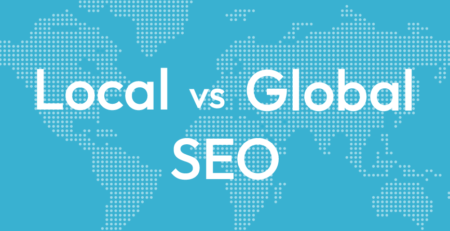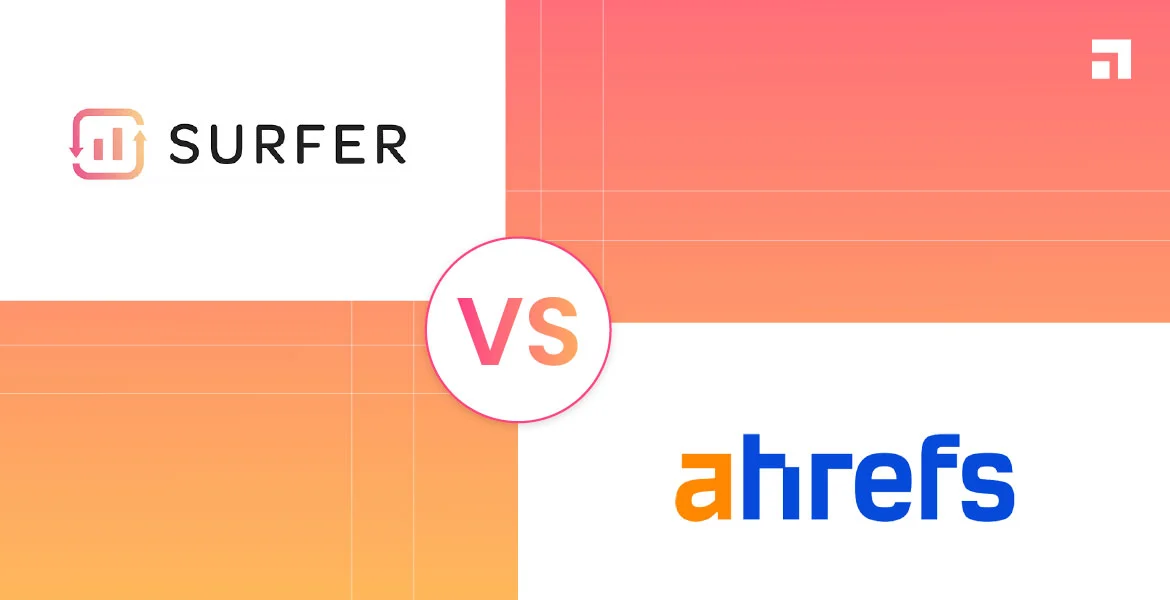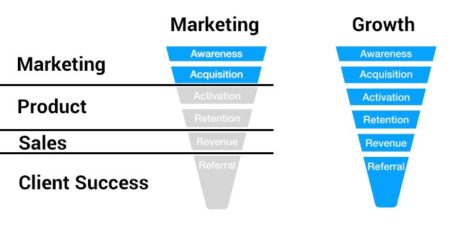Seo Vs Sea: Get The Main Difference In 2023
Attention all curious minds, today we embark on a journey to unravel the secrets of online marketing. In the vast digital realm, two powerful forces collide: SEO and SEA. Hold on tight as we explore the differences between these marketing superheroes!
Join us as we venture into a world where websites battle for attention and businesses strive to conquer the online market. Have you ever wondered what distinguishes SEO from SEA? Well, wonder no more!
Get ready to dive deep into the world of search engine optimization and search engine advertising. So, grab your snorkel and let’s explore the fascinating world of SEO vs SEA!
| SEO | SEA |
|---|---|
| Organic search traffic | Paid search advertising |
| Long-term strategy | Immediate results |
| On-page optimization | Keyword bidding |
| Higher click-through rate | Targeted audience |
| Constant monitoring and adjustment | Higher conversions |
Looking for effective online marketing strategies? SEO (Search Engine Optimization) and SEA (Search Engine Advertising) offer different benefits. SEO focuses on organic search traffic and long-term results by optimizing your website. On the other hand, SEA provides immediate exposure through paid search advertising, targeting specific keywords and audiences. While SEO requires constant monitoring and adjustment, SEA delivers higher conversions with its targeted approach. Consider your goals and budget to determine which strategy works best for your business.
Key Takeaways: SEO vs SEA
1. SEO (Search Engine Optimization) focuses on improving website visibility in organic search results.
2. SEA (Search Engine Advertising) involves paid advertisements in search engine results.
3. SEO helps drive organic, long-term traffic to your website, while SEA provides immediate visibility through paid ads.
4. SEO requires optimizing website content, meta tags, and backlinks, while SEA involves creating and managing ad campaigns.
5. SEO is a long-term strategy for sustainable growth, while SEA is a short-term solution for quick results.
Comparing SEO vs. SEA: Which Drives Online Success?
When it comes to online marketing strategies, two powerful tactics often come to mind: SEO (Search Engine Optimization) and SEA (Search Engine Advertising). Both play crucial roles in driving traffic and improving visibility for businesses, but they employ different methods to achieve these results. In this article, we’ll dive into the world of SEO and SEA, comparing their key features, user experiences, pros and cons, and price points. By the end, you’ll have a clearer understanding of which strategy may be the better fit for your online success.
Overview of SEO
SEO, or Search Engine Optimization, is the practice of optimizing your website’s content and structure to improve its visibility in organic search engine results. It involves various techniques including keyword research, on-page optimization, link building, and technical optimizations. SEO aims to attract organic traffic and increase organic rankings on search engine result pages (SERPs).
With SEO, businesses focus on creating high-quality content that is relevant to their target audience and optimized for search engines. By adhering to SEO best practices, websites can earn higher rankings on SERPs, leading to increased organic traffic and better visibility.
While SEO requires continuous effort and time to see results, it offers long-term benefits and can lead to sustainable organic growth.
Overview of SEA
SEA, or Search Engine Advertising, involves paid campaigns to drive traffic and increase visibility on search engine platforms. This is typically done through Pay-Per-Click (PPC) advertising, where businesses bid on keywords and display ads on search engine result pages.
With SEA, businesses can create targeted ads that are displayed to users based on their search queries. These ads can appear above or alongside organic search results, giving them higher visibility. The advantage of SEA is that businesses can quickly reach a wider audience and have more control over their ad campaigns.
SEA offers instant results, as businesses can start driving traffic to their website as soon as their ad campaigns are active. However, it also requires ongoing investment to maintain visibility and traffic.
Key Features Compared: SEO vs. SEA
Now that we have an understanding of SEO and SEA, let’s dive deeper into their key features and compare how they differ:
1. Organic vs. Paid Traffic
One of the fundamental differences between SEO and SEA is the source of traffic they generate. SEO primarily focuses on driving organic traffic, which refers to visitors who find your website through unpaid search results. On the other hand, SEA focuses on paid traffic, where businesses bid on keywords to display targeted ads to potential customers.
Organic traffic is often seen as more valuable, as it indicates that users are finding and visiting your website based on the relevance and quality of your content. Paid traffic, while not inherently less valuable, requires ongoing investment to maintain its flow.
2. Long-Term vs. Short-Term Results
SEO is a long-term strategy that requires time and effort to see its full impact. It takes time for search engines to crawl and index your website’s pages, and for your optimized content to climb the SERPs. However, once you build a strong foundation and consistently produce high-quality content, you can enjoy sustainable organic traffic and long-term results.
SEA, on the other hand, offers instant results. As soon as your ad campaigns are live, you can start driving traffic to your website. This can be beneficial for businesses looking for quick visibility and immediate results. However, once you stop investing in ad campaigns, the traffic and visibility generated through SEA will also cease.
3. Cost Structure
The cost structure of SEO and SEA differs significantly. SEO is a long-term investment that requires ongoing effort and resources. While it may not require direct monetary investment, businesses often allocate budget for content creation, link building, and technical optimizations. The cost of SEO mainly lies in the time and expertise needed to implement and maintain it.
SEA, on the other hand, involves direct monetary investment. Businesses bid on keywords and pay for each click on their ads, hence the term Pay-Per-Click (PPC) advertising. The cost of SEA can vary depending on factors such as keyword competitiveness, ad relevance, and bids. While it can be cost-effective when managed well, businesses must be prepared to allocate a budget specifically for ad campaigns.
User Experience: SEO vs. SEA
When it comes to the user experience, both SEO and SEA can significantly impact how users perceive and interact with your website. Let’s explore the user experience aspects of both strategies:
User Experience with SEO
With SEO, the focus is on providing the best possible experience for users. By optimizing your website for search engines, you also improve its overall usability and accessibility for visitors. Here are some ways SEO enhances user experience:
1. Relevant and High-Quality Content
SEO emphasizes the creation of informative and relevant content. By incorporating targeted keywords naturally into your content, you can provide valuable information to users and address their search queries. When users find your content helpful, they are more likely to spend time on your website and engage with your brand.
2. Easy Website Navigation
Optimizing your website’s structure and internal linking helps search engines crawl and index your pages more effectively. At the same time, it improves website navigation for users. With clear navigation menus and intuitive links, visitors can easily find the information they’re seeking, leading to a positive user experience.
3. Faster Loading Speed
SEO also focuses on technical optimizations, such as optimizing website speed. Websites that load quickly provide a better user experience, as users can access the information they need without delay. A fast website also reduces bounce rates and encourages visitors to explore further.
User Experience with SEA
SEA also plays a role in shaping user experience, albeit in a different way. Here are some aspects of user experience influenced by SEA:
1. Targeted Ads
SEA allows businesses to create highly targeted ads that are relevant to users’ search queries. By displaying ads that align with users’ interests or needs, you enhance their experience by presenting them with information that matches their intent. This can result in higher click-through rates and better engagement.
2. Increased Visibility
When businesses invest in SEA, their ads can appear prominently on search engine result pages. This increased visibility makes it easier for users to find relevant information quickly. Users appreciate easily accessible options, and seeing your ads at the top of search results can improve their overall experience.
3. Clear Calls to Action
Ads created for SEA often include clear calls to action (CTAs) that guide users to take specific actions, such as making a purchase or signing up for a newsletter. By providing clear instructions and guiding users through the desired steps, SEA enhances the user experience and drives conversions.
Pros and Cons: SEO vs. SEA
Pros and Cons of SEO
Pros of SEO:
- Long-term organic growth potential
- Cost-effective in the long run
- Builds credibility and trust
- Increases brand visibility
- Targets a wider range of keywords
Cons of SEO:
- Requires time and effort to see results
- Results can be influenced by search engine algorithm updates
- Competitive landscapes may make it harder to rank
- Requires ongoing maintenance and updates
- Limited control over search engine rankings
Pros and Cons of SEA
Pros of SEA:
- Provides immediate visibility and traffic
- Offers precise audience targeting
- Allows for quick testing and optimization of ad campaigns
- Provides data-driven insights and analytics
- Allows for greater control over ad placement and messaging
Cons of SEA:
- Requires ongoing investment to maintain visibility
- Can become costly, especially for highly competitive keywords
- Results cease when ad campaigns are stopped
- Ad blockers may limit ad visibility to some users
- Requires continuous monitoring and optimization
Price Comparison: SEO vs. SEA
When comparing the price points of SEO and SEA, it’s important to consider the long-term costs and potential returns. Here are some factors to consider:
SEO Pricing Factors
While SEO doesn’t require direct monetary investment, there are still costs associated with it:
1. Content Creation:
Producing high-quality content, including blog posts, articles, and website copy, may require outsourcing or hiring in-house writers.
2. Technical Optimizations:
Ensuring your website is technically optimized for SEO may involve consulting with specialists or implementing technical improvements yourself.
3. Link Building:
Building high-quality backlinks to improve your website’s authority may involve reaching out to other websites, guest posting, or utilizing digital PR services.
SEA Pricing Factors
Unlike SEO, SEA involves direct monetary investment. Here are some cost factors to consider:
1. Keyword Competition:
The cost-per-click (CPC) in SEA varies depending on the industry and keyword competition. Highly competitive keywords can be expensive.
2. Ad Campaign Management:
Managing ad campaigns effectively may require the expertise of digital marketing professionals or agencies, which can add to the overall cost.
3. Testing and Optimization:
Constant testing and optimization of ad campaigns may require ongoing investment to ensure optimal performance and results.
Comparison Table: SEO vs. SEA
| Feature | SEO | SEA |
|---|---|---|
| Source of Traffic | Organic | Paid |
| Results Duration | Long-Term | Short-Term |
| Cost Structure | Time and Resources | Direct Monetary Investment |
| Visibility | Dependent on Rankings | Immediate |
| Control over Ranking | Limited | Greater Control |
| User Experience | Improved with Quality Content and Usability | Enhanced with Targeted Ads and Calls to Action |
Which is Better – SEO vs. SEA?
After comparing the key features, user experiences, pros and cons, and price points of SEO and SEA, it’s important to consider which strategy may be the better fit for your business. Ultimately, the decision depends on your goals, budget, and resources. However, here are three reasons why one approach may be more beneficial:
1. Long-Term Growth:
If you’re looking for sustainable organic growth and are willing to invest time and resources into building a strong online presence, SEO may be the better choice. SEO allows for long-term visibility and organic traffic growth, making it ideal for businesses focused on long-term success.
2. Quick Visibility and Results:
If you’re seeking immediate visibility and want to quickly drive traffic to your website, SEA may be the better option. With SEA, you can start seeing results as soon as your ad campaigns are live, allowing for faster customer acquisition and immediate visibility.
3. Budget Flexibility:
If you have a limited budget and prefer to allocate resources gradually over time, SEO may be the better choice. While SEO requires ongoing effort, it allows for budget flexibility as you can invest resources into content creation, technical optimizations, and link building at your own pace.
In the end, the decision between SEO and SEA depends on your specific needs, goals, and resources. Some businesses may find success with a combination of both strategies, leveraging the long-term benefits of SEO and the quick visibility of SEA.
When deciding between SEO and SEA, it’s essential to consider your target audience, goals, and available resources. By understanding the key features, user experiences, and pros and cons of each approach, you can make an informed decision that aligns with your business objectives. Whether you choose SEO, SEA, or a combination of both, remember that consistency, relevance, and quality are key factors in driving online success.
Frequently Asked Questions
When it comes to digital marketing, understanding the difference between SEO and SEA is crucial. SEO stands for Search Engine Optimization, while SEA stands for Search Engine Advertising. Both strategies aim to increase online visibility, but they have distinct approaches. Here are some common questions and answers about SEO vs SEA.
1. How does SEO differ from SEA?
SEO focuses on optimizing your website and content to rank higher in organic search results. It involves various techniques like keyword research, on-page optimization, and link building. By improving your website’s visibility in search engines, SEO helps drive organic, unpaid traffic to your site.
On the other hand, SEA involves paid advertisements that appear at the top of search engine results pages (SERPs). Advertisers bid on keywords and pay for clicks or impressions. SEA provides immediate visibility, allowing businesses to target specific keywords and demographic groups.
2. Does SEO or SEA provide faster results?
SEO is a long-term strategy that requires time and consistent effort to see results. It may take several months for your website to climb the rankings and generate significant organic traffic. However, once you establish a strong SEO foundation, it can provide sustainable traffic and better visibility in the long run.
On the other hand, SEA provides faster results as your ads are displayed immediately after setting up a campaign. It can quickly increase your website’s visibility and bring targeted traffic to your site. However, once you stop investing in SEA, your visibility and traffic will immediately drop.
3. Which strategy is more cost-effective?
SEO generally has a lower long-term cost compared to SEA. While SEO might require an initial investment in hiring an SEO professional or creating quality content, it can provide long-term results without ongoing advertising costs. Once you achieve higher organic rankings, you can continue to generate traffic without directly paying for every click or impression.
SEA, on the other hand, involves paying for every click on your ads, which can add up quickly. The cost of SEA campaigns depends on factors like keyword competitiveness and quality score. While SEA can be effective for certain purposes, it requires ongoing investment to maintain visibility and traffic.
4. Can SEO and SEA be used together?
Absolutely! Combining SEO and SEA can be a powerful strategy for enhancing your online presence. SEO can provide long-term visibility and organic traffic, while SEA can deliver immediate results and targeted traffic. By utilizing both strategies, you can cover a broader range of keywords, increase brand exposure, and maximize your online marketing efforts.
When using SEO and SEA together, it’s essential to align your strategies and ensure consistency in your messaging and branding across both channels. Additionally, regularly analyzing and optimizing your campaigns can help you make data-driven decisions and achieve better overall results.
5. Which strategy is better: SEO or SEA?
There is no definitive answer to this question as it depends on your specific goals, budget, and target audience. SEO is beneficial for long-term, sustainable growth and organic traffic. It helps improve your website’s visibility and credibility over time. On the other hand, SEA can provide immediate visibility and targeted traffic, making it suitable for short-term campaigns or when you need quick results.
Ultimately, a well-rounded digital marketing strategy may involve utilizing both SEO and SEA based on your business objectives. Understanding your target audience, conducting thorough keyword research, and regularly analyzing your performance can help you make informed decisions and achieve the best possible results.
SEO In 5 Minutes | What Is SEO And How Does It Work | SEO Explained | SEO Tutorial | Simplilearn
## Summary
In this article, we learned about two important ways to improve websites: SEO and SEA.
SEO, or Search Engine Optimization, helps websites rank higher in search results by using keywords and making the site user-friendly. It’s like giving a website a makeover so it can be easily found by search engines.
SEA, or Search Engine Advertising, is a way to get your website seen by more people through paid ads on search engines. It’s like renting a spot at the top of the search results to attract more visitors.
Both SEO and SEA have their pros and cons. SEO takes time and effort, but it’s a long-term strategy that can bring in lots of organic traffic. On the other hand, SEA can give quick results, but it can be costly and might not be sustainable.
So, what’s the best approach? It really depends on your goals and budget. If you want long-term success and are willing to put in the work, SEO is the way to go. But if you need quick results and have the money to spend on ads, SEA can get you there faster.
Remember, improving your website’s visibility is an ongoing process. Keep learning, testing, and adjusting your strategies so you can continue to grow and reach more people online. Good luck!

